4 Business Cases Revolutionized by Advanced Patent Analytics
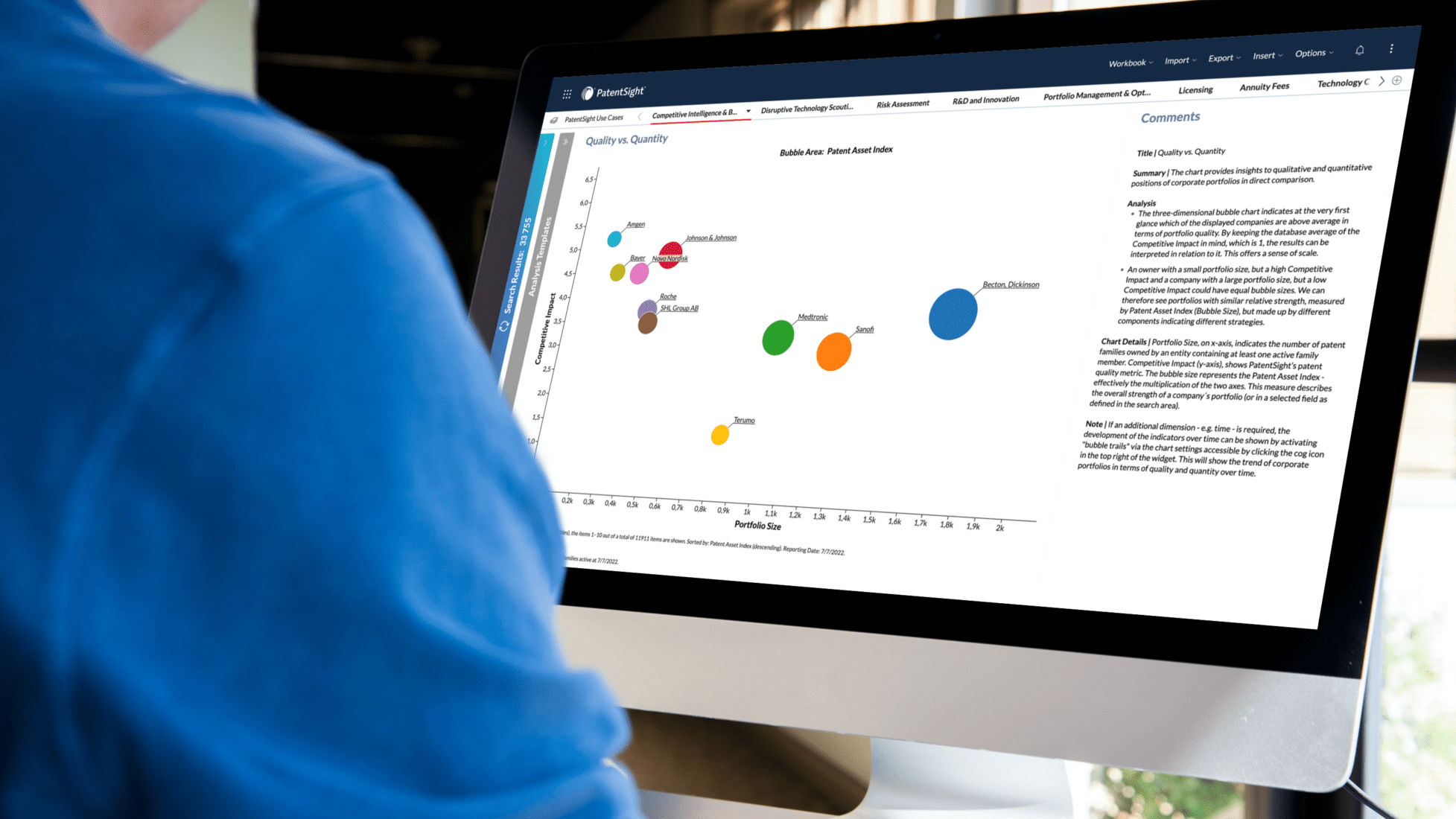
When developing a business strategy impacting an organization’s future, decision makers always need reliable, actionable, and insightful information.
Patent data is a revolutionary information frontier enabling the measurement and analysis of innovation. But publicly available patent data is error-prone and cannot be used to make strategic decisions. It requires heavy processing to be made into useful and dependable information.
Reliable patent data, on the other hand, can provide deep insights into revolutionary technologies and help form robust innovation strategies. Intellectual Property departments are now poised to take center stage at C-suite level meetings by bringing valuable insights from patent analytics to enable decision making in other aspects of the business.
How qualitative, advanced patent analytics help unlock deep insights
The LexisNexis proprietary metric, PatentSight® Patent Asset Index, was developed based on extensive scientific research and proves that patents hold much more valuable information than simply the technology it protects. Based on our model consisting of multiple indicators that feed into the overall value of a patent portfolio, each patent family is evaluated based on two main indicators – Technology Relevance and Market Coverage. While the former measures the importance of the technology protected by a patent family in terms of citations, the latter measures the economic impact of the patent family by measuring the relative market size protected by the patent family around the world.
These values are also adjusted to account for various factors that cause inconsistencies, for example, the variations in citation practices at different patent offices or the age of patents since older patents tend to have more citations. Together, these indicators make up the individual strength of a patent family in a portfolio. The sum of all Competitive Impact values of all patent families in that portfolio is the Patent Asset Index, or total strength of the portfolio.
The Patent Asset Index Methodology – allowing for advanced analytics use cases and unparalleled innovation insights
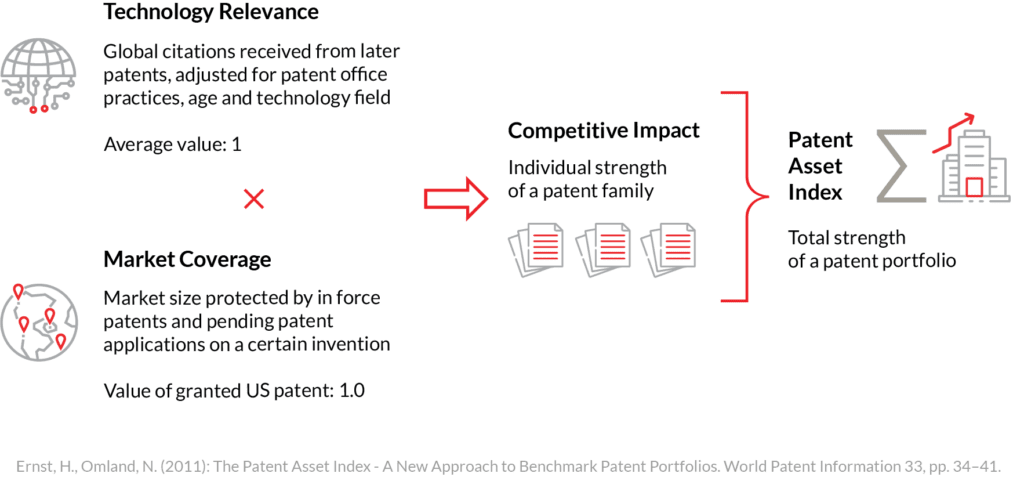
Business cases that are revolutionized by advanced patent analytics
LexisNexis® PatentSight® combines reliable data with the ability to perform qualitative patent analysis to provide unique insights into the following business cases:
- Competitive intelligence and benchmarking: Knowing the technologies owned by a competitor and their relative quality compared to your own technology is very helpful in informing future strategies. PatentSight® charts and metrics help compare patent portfolios of multiple companies using graphs that plot portfolio quality vs. quantity and also track the development of individual portfolio strength as measured by the Patent Asset Index, over time.
Your competitors’ big picture portfolio strategies, for example, if they are continuously pruning their portfolios or if they have increased filing in a specific technology in the past years, become evident from these charts.
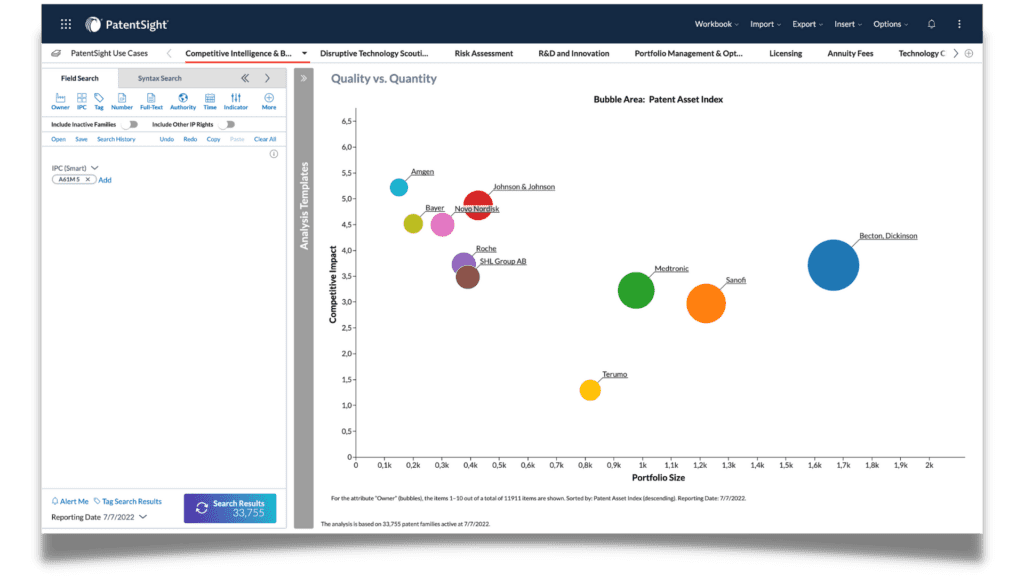
Quality vs. quantity comparison: Get insights into your competitors’ portfolio development over time.
- Licensing and monetization: PatentSight’s internal- and external-looking citation metrics can measure a patent’s relevancy to an organization’s overall technology strategy. These can be used to analyze a patent portfolio and identify any potential for monetization. For example, suppose there are patents in a company’s portfolio that are being heavily cited by another company but are of no commercial value to the company that owns it. In that case, these patents can create more value for their owner when licensed or sold off. Using this analysis, you can identify both patents that can be monetized in a portfolio and even potential licensees.
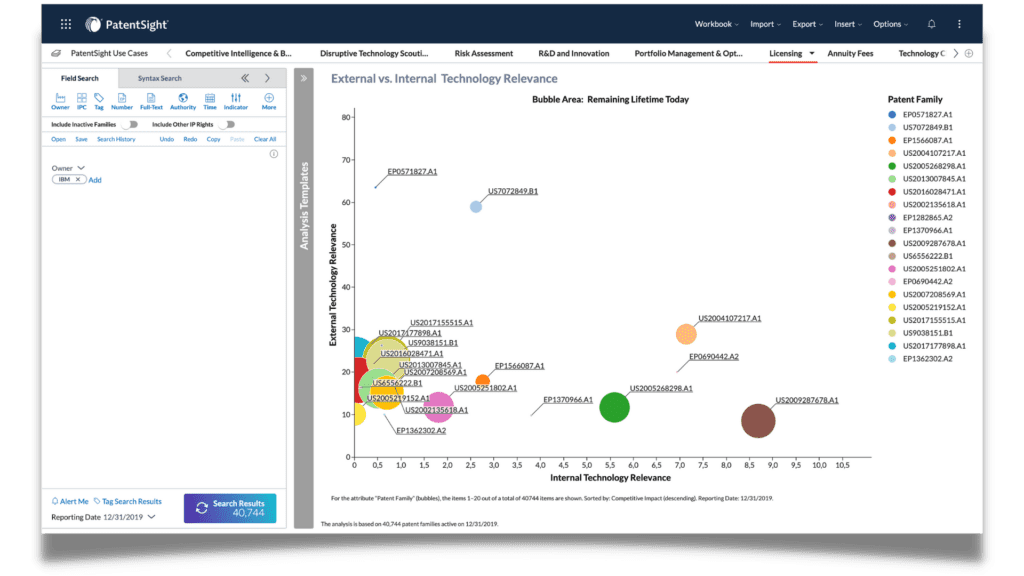
Identify patents for licensing.
- Trend scouting: The Patent Asset Index qualitative trend charts help clearly identify leading or disruptive technologies from among the clutter of patenting activity. This is possible irrespective of whether looking at a mature technology field dominated by large multinationals, or an emerging space pioneered by start-ups. Unlike looking purely at the number of patents in a portfolio, analyzing patent portfolios from a qualitative perspective can help spot a small start-up with a disruptive innovation early on ‒ even if dozens of other players apply for many more patents in the same space.
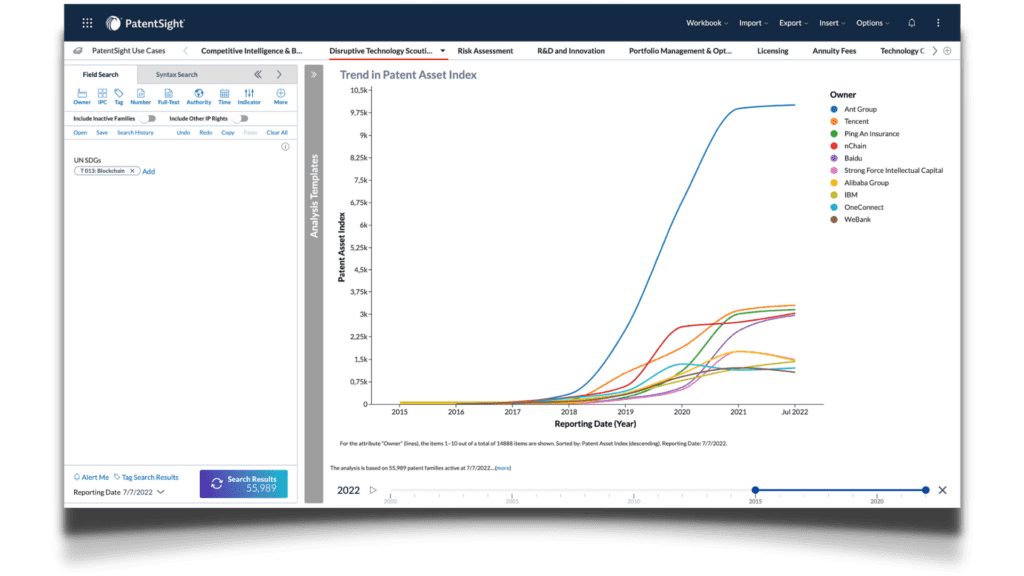
Identify players with the highest portfolio strength in trending technologies.
- M&A target search: Whether merging with a company for technological synergy or buying one out that is developing disruptive technology, working with reliable patent quality indicators and insights can be the difference between entering a high-growth market or spiraling out into technological oblivion. Patent Asset Index and other qualitative metrics help decision makers weed out the targets that are of no interest to them from a technological standpoint and focus on the ones that are of real value. M&A due diligence thus becomes considerably easier when relying on patent analytics.
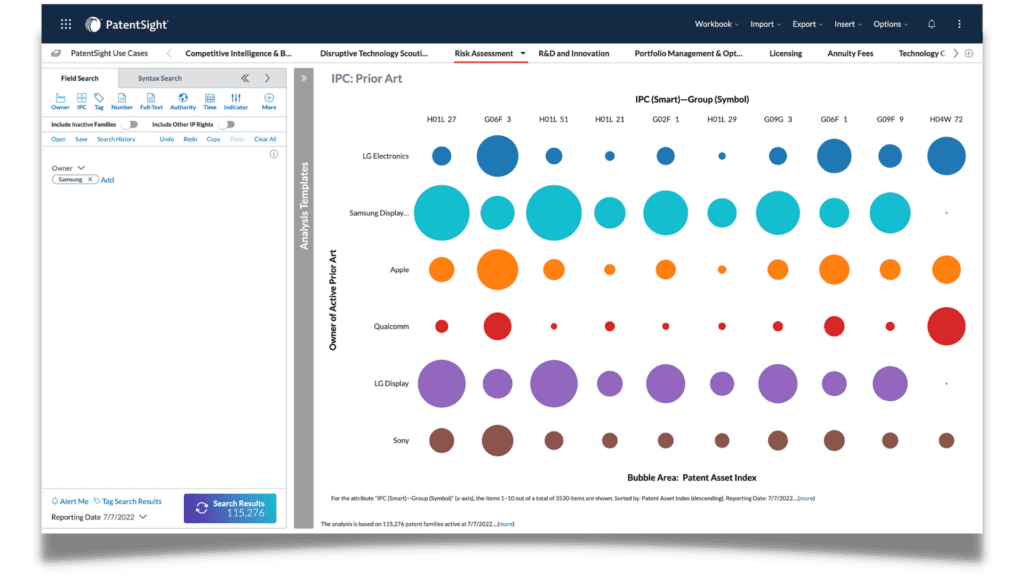
Efficiently assess the value or risk of acquisition candidates.
High-quality patent data – a prerequisite for boardroom-ready patent analysis
Due to the amount of valuable information derived, high-quality patent data has become a prerequisite for supporting strategic business decisions. The problem with raw, unprocessed patent data is that it is often incomplete and error-prone. At LexisNexis, we employ a 2-factor system to ensure that all the data that flows into our solutions help our customers derive relevant and actionable insights for their business needs.
We collect large amounts of patent data from various public sources and then pass them initially through an AI-based cleaning algorithm that corrects the bulk of the errors in the data. Our experienced patent data research team then analyzes this data for inconsistencies and quality checks. Our research team is proficient in a variety of languages in which patents are filed across the world and are highly qualified and experienced in identifying and correcting inaccuracies in the patent data. Here are some of the issues and updates that our team catches on a regular day:
- Misspellings of the applicant’s name
- Ongoing mergers and acquisitions
- Patents that are assigned to subsidiaries but are commercially owned by the parent company.
- Alternate names of the same applicant e.g., I.B.M., IBM, International Business Machines, IBM Corp etc.
Taking patent analytics out of the ‘black box’
With LexisNexis® Intellectual Property Solutions, effectively communicate the value of your IP with powerful insights and visualizations, enabling you to turn your patent department into a strategic consulting unit. Benefit from a highly transparent scientific approach to patent data analysis. Forget opaque algorithms and analytics ‘black boxes’, we can show you exactly how we reached at our insights.
If you want to know more about our data quality and how we ensure this, read our data quality whitepaper.

Get actionable insights for strategic decision making
Want to become more effective at managing your patent portfolio, identify worldwide relevant patents and technology trends, assess the competitive landscape, and find partners and licensing opportunities?
